The promise of Marvel’s Avengers is simple: This is a game that will make you feel like Earth’s mightiest heroes. Better still, you’ll be able to team up—or, as I think I’m contractually obligated to say, assemble—with your friends to save the world together. After going hands on with early access to the game’s upcoming beta for a few days, I think it’s safe to say that the combined efforts of Crystal Dynamics and Eidos Montreal (as well as a few support studios) have realized the core goal of translating a diverse cast of heroes with fairly different powers into compelling action gameplay. But the more I played, the more I started to worry about the game surrounding that combat.
Before we get into that, however, let’s talk about those heroes. The beta includes access to an intro mission, set during a celebration called A-Day that goes catastrophically wrong and causes our heroes to disband. Here, you can play, albeit briefly, as all the major Avengers: Captain America, Thor, Iron Man, Black Widow, and Hulk. For the bulk of the time, however, you’re limited to just four heroes.
Most central to the narrative, and my personal favorite from the beta, is Kamala Khan, also known as Ms. Marvel. Granted Inhuman powers to stretch and enlarge parts of her body by the Terrigen Mist released during A-Day, she serves as the central character of the story as she sets out to reunite the Avengers and take down the evil organization known as A.I.M. Joining her—at least once you’ve beaten a few story missions and gained access to your central base of operations, a Helicarrier called the Chimera—are Hulk, Iron Man, and Black Widow.
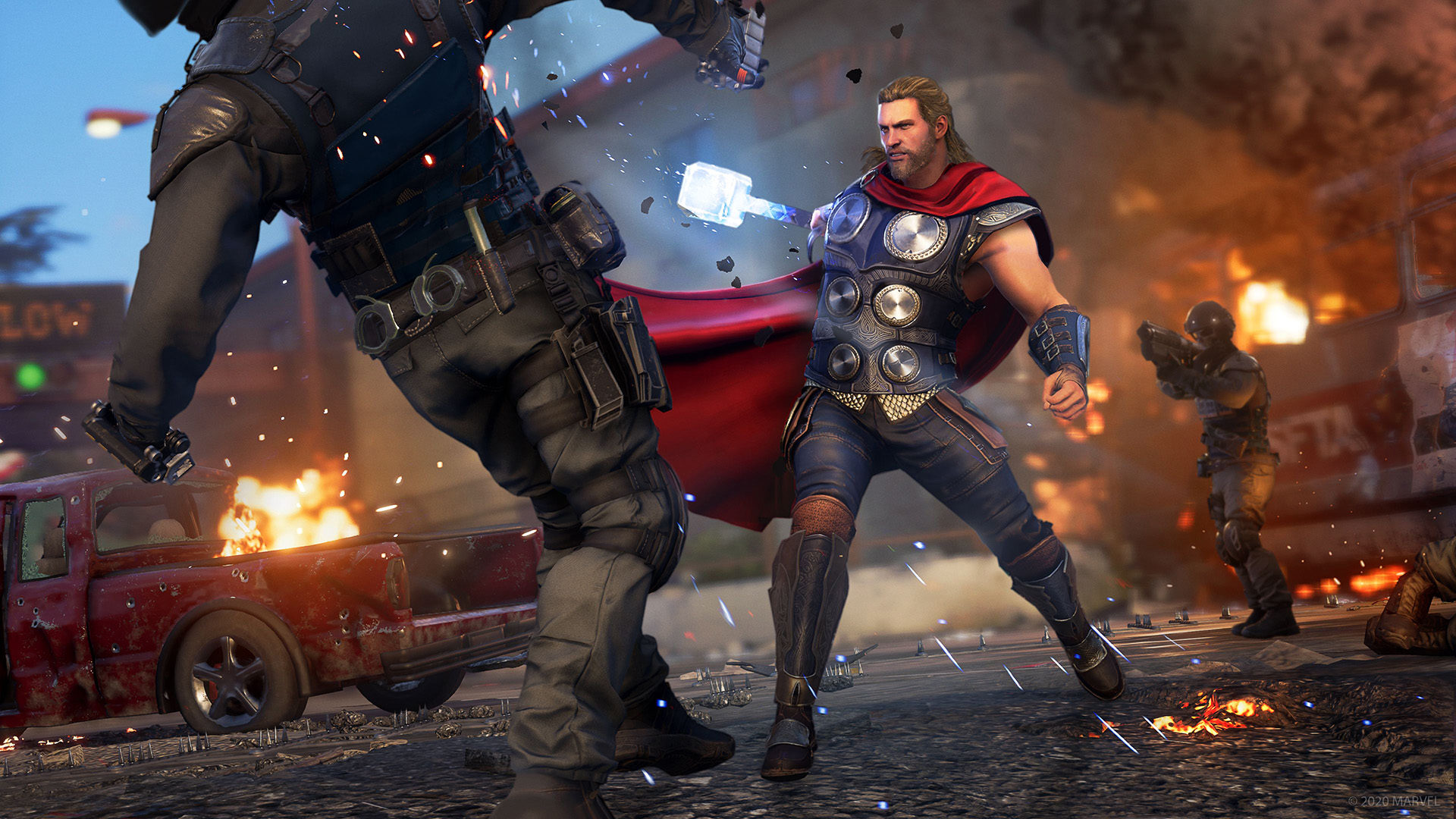
All of these characters do share some basic commonalities in their control schemes. Everyone has a light attack, a heavy attack, at least one ranged attack, a jump, and a dodge. They’ve each got three special abilities with lengthy cooldowns, one of which is an ultimate. Iron Man’s ult, for instance, is calling down the massive Hulkbuster armor, which renders him invulnerable to damage for the duration, while Kamala can embiggen herself to around three times her normal height and dish out more damage.
Of course, some characters have more options, or at least more useful options, than others. Iron Man can fly and hover above the battlefield, but the Hulk can just jump and, on specific structures, wall-jump. Black Widow and Kamala can both grapple onto platforms (well, if a stretchy arm counts as a grapple, in Kamala’s case) and swing from specific branches and pipes. And while Ms. Marvel and Hulk have fairly limited ranged capabilities—a long-distance punch or grab in the case of the former, tossing a small rock or a big rock for the latter—the beta’s other two playable characters have a much richer set of tools. Iron Man can swap between repulsor blasts, missiles, and lasers on the fly using the D-pad, each of which offers different advantages and opens up new combos. Similarly, Black Widow can switch between standard, heavy, and rapid-fire guns for her ranged attacks.
One of the other major points of distinction between the different heroes are their “intrinsic” abilities, which rely on a secondary meter below their health. In the case of Iron Man and Ms. Marvel, these bars simply recharge over time after you’ve used them, and certain attacks drain them. Tony spends a bit of his meter with each ranged shot, while Kamala can hold down the right trigger to use Polymorph, making her slightly larger than normal and opening up new attacks. (With the right skill tree unlock, you can also use it to regenerate health.) But Hulk’s intrinsic bar only fills up as he does damage. Like Kamala, he can then use it to power a special attack mode by holding the right trigger. And Widow only builds up her meter by doing damage without taking any. Max it out, and you’ll glow red and (I believe) do a bit more damage with every attack—but once you get hit your bar is drained and you lose the buff.
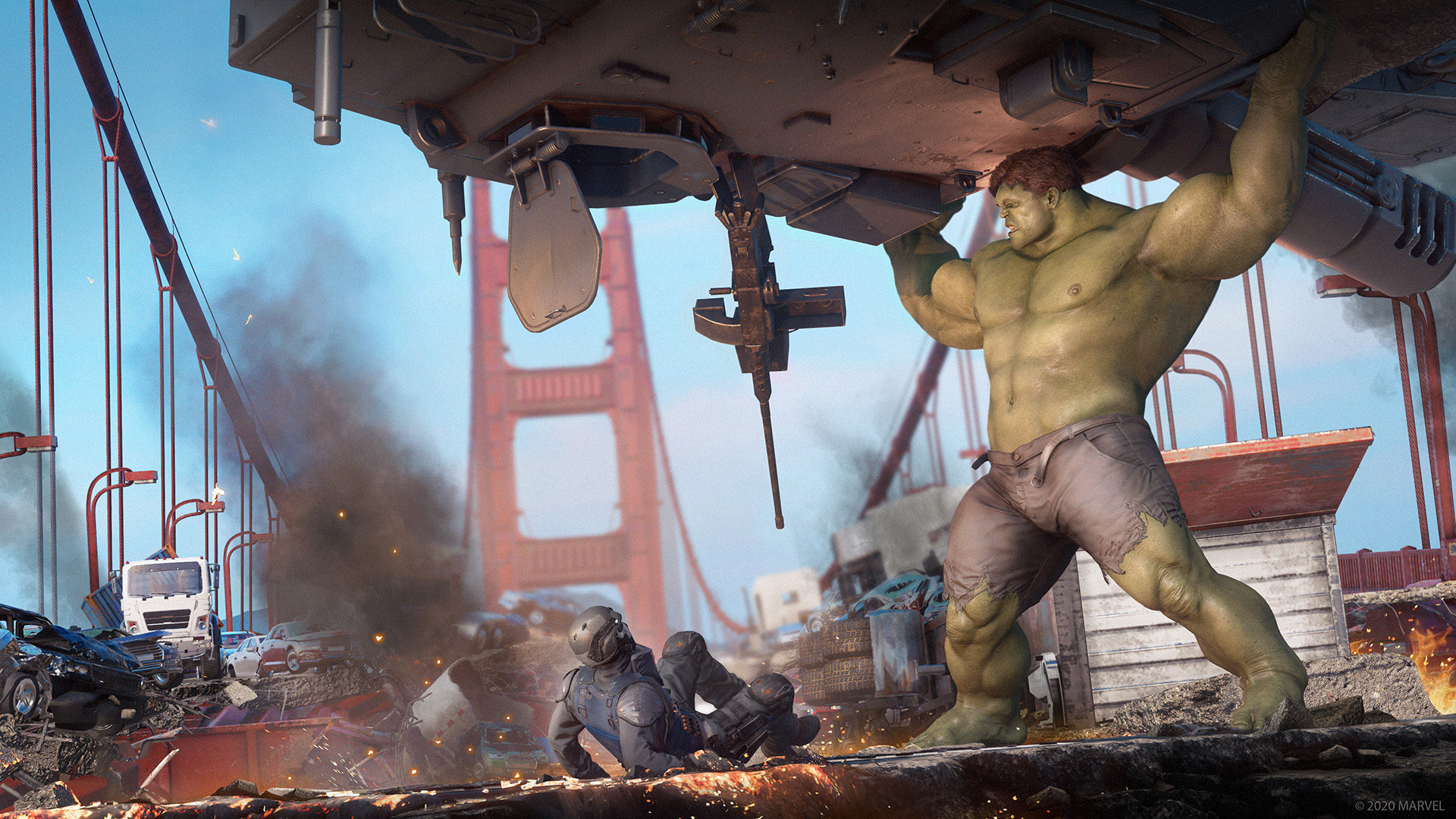
All this is to say that, while there are enough commonalities between how these heroes control to ensure you won’t be lost when you swap between them, they do feel quite distinct in ways both big and small, all in the interest of being true to their portrayal in the comics. Kamala is great at brawling in the middle of a crowd and pulling foes up off the ground to continue the combo into mid-air. Widow is a swift and stylish fighter on the ground who can also do chip damage from a distance, especially once you fill out her gun-based skill trees. Iron Man is great in ranged encounters and seamlessly working projectiles into his melee combos, but in my experience he’s noticeably more vulnerable if you park him in the middle of a fight—at least until the Hulkbuster comes out. Hulk is pretty much your classic tank, and that’s probably why he’s among the most boring for me to play. On the whole, I nearly always felt like the combat, even at its most hectic, was allowing me to embody my chosen hero in a way that felt both accurate and in line with my expectations as a Marvel fan.
As I’ve hinted at, you can level up each of these heroes in two ways. First, there’s a skill tree that opens up new combos and abilities and improves those you already own, all based on a standard XP and levelling system. In the beta, you only get access to a single page of skills, so I’m curious to see what the other two entail. What’s here works well enough.
Second is the gear, which is fairly standard among loot based games, with Destiny 2 being one obvious analog. You can acquire gear for various slots on your character, though there’s no cosmetic changes based on what you’ve equipped. Each item can up your overall combat effectiveness by raising stats, which are then reflected in a single overall power level for the character. Each item slot has an associated resource you’ll pick up from chests and out in the world, and you can spend those resources to raise the power level of your gear a bit—rarer items let you boost it up to 10 times, while the most common allow for just three bumps.
Gear also offers specific perks, like the ability to do specific damage types with certain attacks. Pym particles that have a chance to shrink foes are probably the highlight—everything else felt so subtle that I had a hard time noticing what I even had equipped without checking my loadout. Certainly in the early going it feels like raising your power level is much more important than working towards any specific build, though I suspect that will change in the late game.
All in all, the RPG elements worked well enough for me in the beta. The systems are complex if you care but in practice mostly stay out of the way to allow your skill on the controller to shine through. You’ll need to pay attention to your power level and loadout enough to keep the numbers going up, but it doesn’t overshadow your ability to wallop hordes of bad guys in flashy battles.
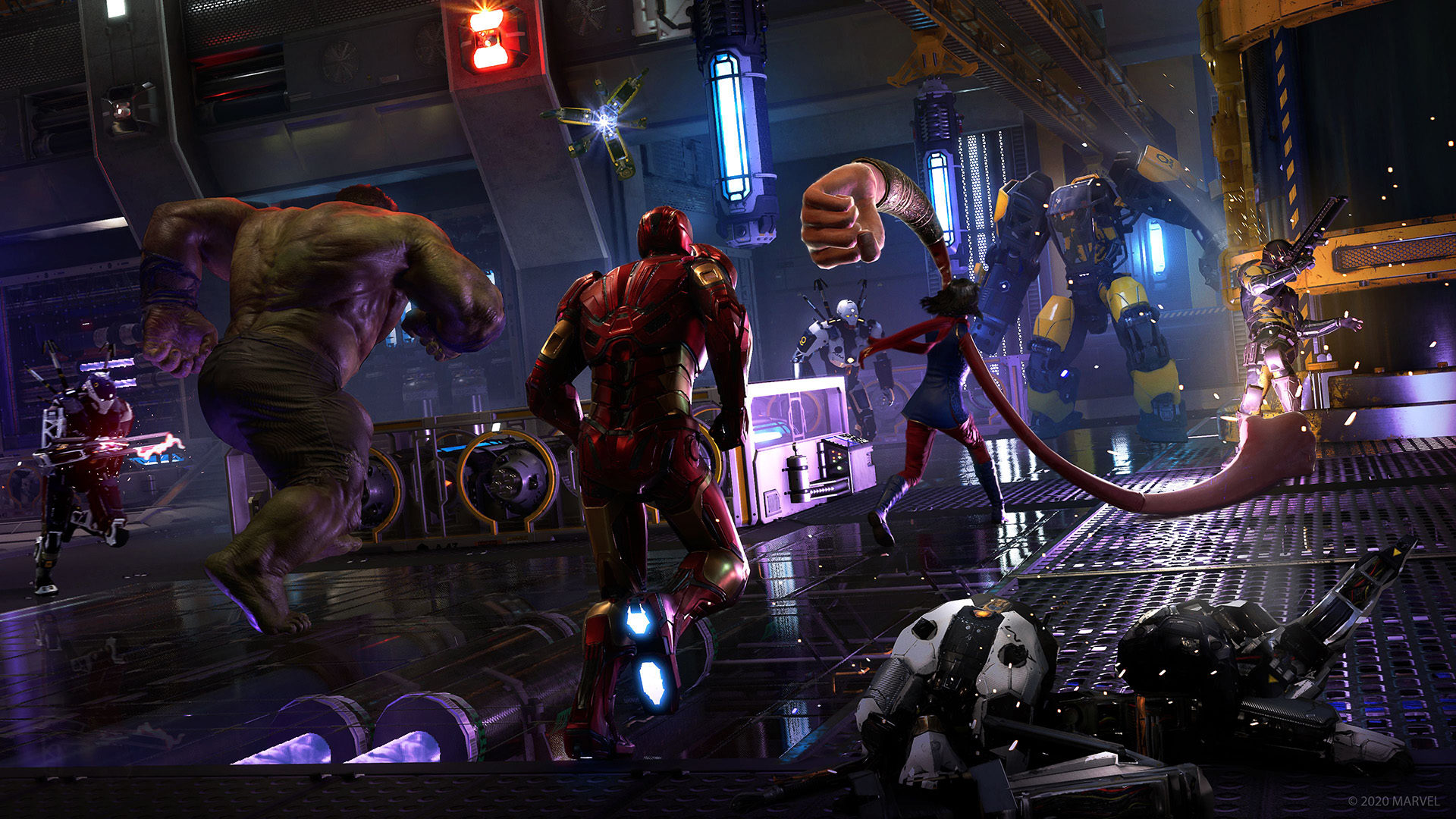
Practically speaking, all this should be the hard part, right? It can be immensely challenging to develop a full and satisfying moveset for a single character in an action game, and that the development teams have managed to pull that off with four quite distinct superheroes is certainly an accomplishment.
But after replaying all the content in the beta several times over, I’d be lying if I said I wasn’t worried about how the rest of the game will come together around those enjoyable fights. With the exception of the introductory A-Day mission—a demo you’ve probably watched a few times already—and a few other short campaign missions, pretty much all the content in the beta relies on recycling similar environments and objectives, rather than presenting a tightly designed, authored experience. These non-campaign missions, designed to be replayable in co-op or with AI-controlled teammates, come in three main varieties here.
First, and most successful, are the HARM rooms—basic wave-based fights against enemies in a Holodeck-style simulation aboard the Chimera. Not terribly ambitious, but they do what you expect and serve up a fun challenge. Second are War Zones, which involve dropping into a larger, more open map that you’re free to explore. You’ll have one main throughline that chains together a few objectives, as well as some optional tasks to accomplish, like finding chests with gear, taking down specific minibosses, and occasionally uncovering secrets. You’ll almost always end up riding an elevator down into an A.I.M. facility, where you move through some corridors before accomplishing one or two final objectives. Finally, there are Drop Zones. These are shorter versions of War Zones that focus on a single objective and kick off already inside the facility—basically just the corridor sections from the ends of other missions.
My main issue is that the War Zone and Drop Zones rely heavily on objectives that feel extremely uninspired. For instance, you’ll take down a group of tough enemies, which is fine, but also not terribly different from standard encounters. You’ll need to stand inside a circle while fighting enemies to fill up a percentage bar, ostensibly so Tony Stark’s AI J.A.R.V.I.S. can hack this or that A.I.M. system. If no one on your squad is in the circle, the enemies fill up their own progress bar. First to 100 percent wins. Or maybe you’ll need to capture three glowing squares on a small indoor map, like a PvE version of a control point game mode. If you’re not on one, enemies may show up and try to cap it for themselves. Again you’re dealing with dueling control points, again so J.A.R.V.I.S. can hack in somewhere. Or maybe you’ll just need to smash a few objects in the environment while enemies attack you.
The one slight exception is a secret mission in the beta in which you travel to a S.H.I.E.L.D. vault. Here, you need to stand in specific glowing squares in a particular order while enemies attack and try to disrupt your progress. It’s a slight improvement in that you need to piece together what numbered glowing square is where and contend with a tight time limit. But it’s a marginal improvement, and quite close to being more of the same.
They all feel like modes that would be fine in a PvP game, where you have to outsmart an opponent, but when the only opposing force is fodder enemies, they’re mindless. They certainly don’t feel like they’re playing to the central fantasy of being a superhero. And frustratingly, when you’re playing with AI companions, they focus only on combat, not with helping out on objectives. Why would you ever deliver on the fantasy of being Iron Man through impressive combat design, only to force me to stand on the ground inside a circle for minutes? Why is so much of my time spent in sections of wilderness that feel like empty obstacle courses and in generic science labs? If its heroes reflect the pure fantasy we spin reading comics or watching Marvel films, so much of the rest of Marvel’s Avengers reflects a philosophy of game design via the path of least resistance.
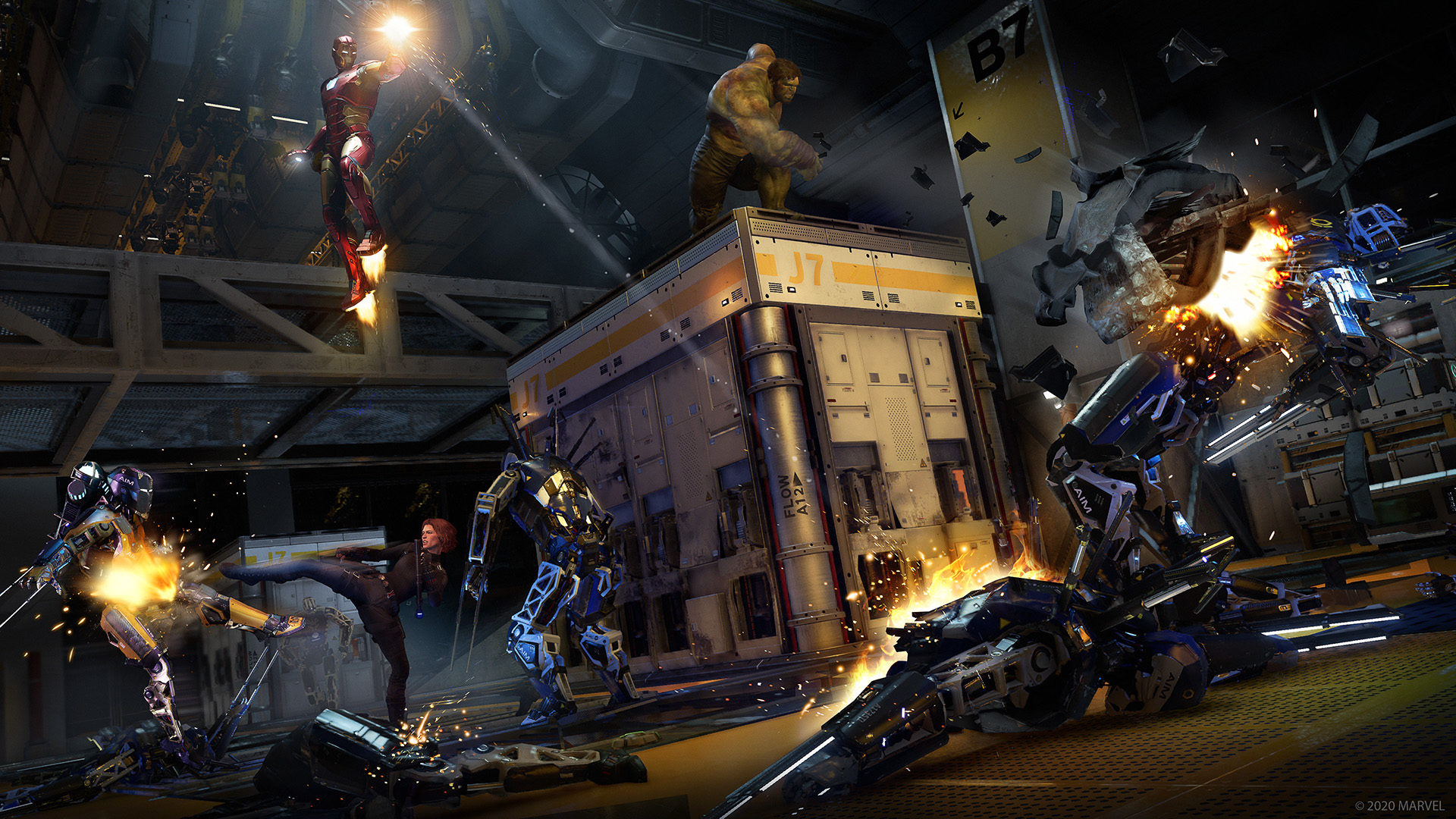
Of course, it’s worth noting that Square Enix has already committed to rolling out tons of post-launch content free of charge. We’re getting a playable Hawkeye, complete with his own storyline, and playable Spider-Man (at least on PlayStation 4). One of the notes the publisher sent along with the beta said that the game experience is “never truly going to be ‘final.’” That’s an admirable goal, but as with all games-as-a-service titles, it’s dependent on having a strong foundation from which to build upon indefinitely.
My biggest fear is that the design is already too solidified to allow the developers to expand it in significant ways at or after launch to accommodate for the shortcomings of what’s available to play in the beta. If you’re rolling out months or years of free content, certainly the easiest thing to do would be to remix the same basic objectives, or devise similarly generic ones, and changing up the setting slightly. At the risk of sounding overly glib, I don’t know if I’m too excited to stand on squares or circles as Hawkeye or Spider-Man, even if it were in a Hydra bunker instead of an A.I.M. base, or even if it were in the Australian Outback instead of the Pacific Northwest.
Plenty of live-service games succeed, and even thrive, despite their limited, repetitive content, but I suspect a big component of that is at least having the option to play in competitive multiplayer. Playing against other people is an engine for generating the unexpected using familiar systems, allowing you to turn each match into its own personal narrative. At the moment, Square Enix hasn’t announced any plans for Marvel’s Avengers to include any competitive element, and I’m skeptical the game’s combat mechanics or premise could support a mode where Avenger fights against Avenger.
Ultimately, this is less of a single game and more of a platform designed to become your next big commitment, where you play and replay content daily or weekly to stay up to date. And I’m just not sure I’ll be able to do the missions in Marvel’s Avengers dozens or hundreds of times without growing bored. It’s obvious, though perhaps cynical to say, that this game is as much about giving Square Enix its own Destiny 2 or Fortnite as it is about delivering on the fantasy of teaming up with your friends as your favorite superheroes. I just don’t know if it has the substance to stick the landing.
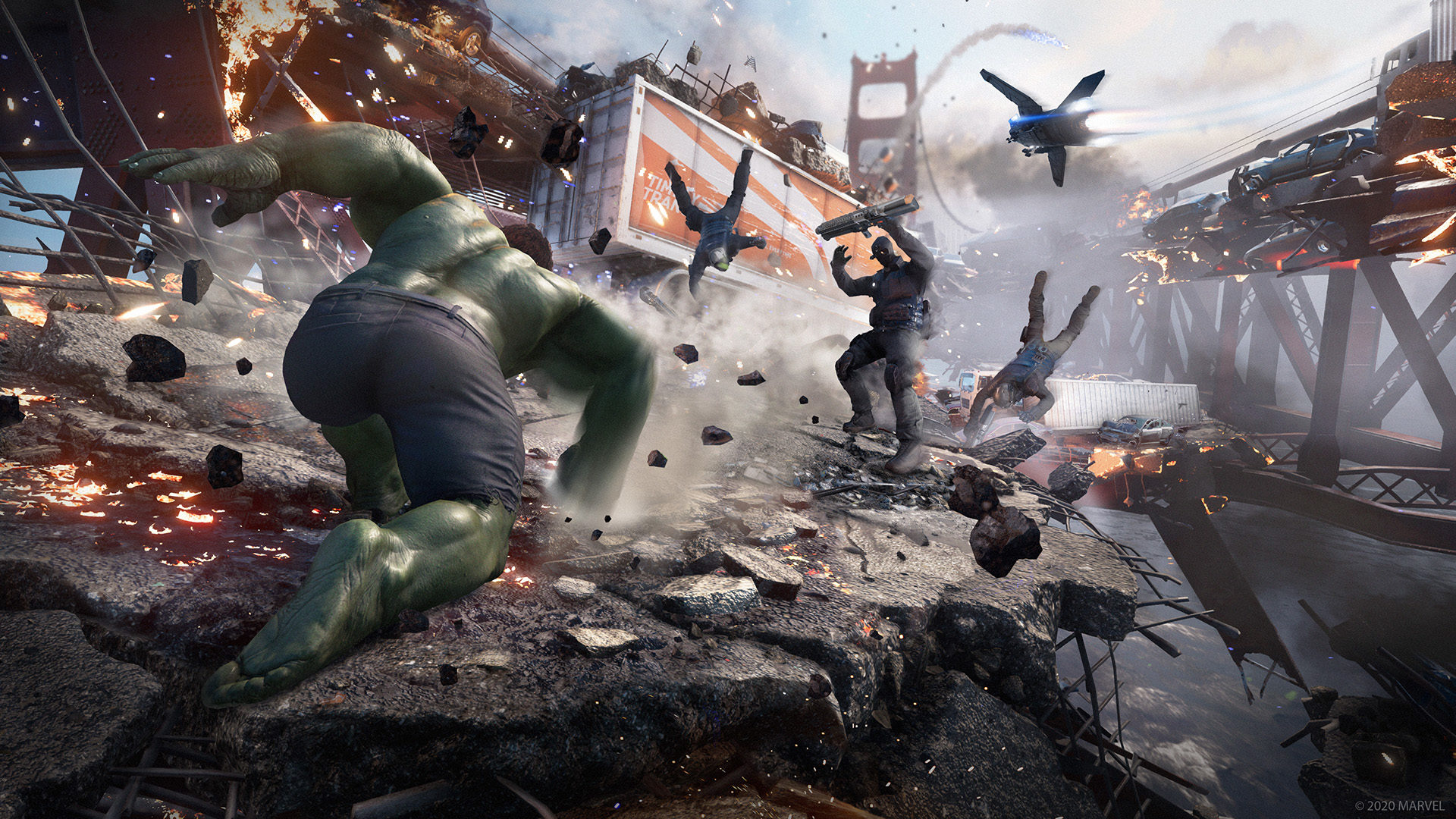
Which brings us to my other major concern: monetization. Within the beta, you can already see that Marvel’s Avengers is likely laying the groundwork to charge real money for in-game content in a number of ways that should be broadly familiar to anyone who’s played a service game. In addition to various in-game resources and currencies, there are also “Credits” that you can seemingly, in the final game, purchase with your real-life money.
From looking at the beta, Credits and other apparent monetization efforts seem to be threaded throughout an awful lot of what you’ll do. You can buy cosmetic items, like skins, emotes, and banners for your player card directly from a store with a limited, rotating selection. You can complete in-game combat challenges—say, finish three enemies in quick succession with ranged attacks as Iron Man 10 times—to level up a battle-pass style “Challenge Card,” with a separate progression tracker for each character. You can also pay Credits to skip ahead on the card to unlock certain rewards, some of which are the valuable in-game resources you can use to level up your gear.
That means, in some small way, that there could be a potential method to spend actual money on things that impact gameplay, since you’d be shelling out cash to skip a portion of the grind. Even within the beta, which accelerates the rate at which you earn gear and level it up, finding enough resources to get all of my Kamala Khan’s loadout to the max power level of 45 took substantial time and effort. After I used the included credits to skip ahead on a Challenge Card and hoover up all those bonus resources, however, getting Iron Man into the high 30s was, by comparison, a breeze.
What’s more, in the beta, these Challenge Cards list the word “free” under each item you can unlock as you progress. The reasonable assumption, given industry standards around battle passes, is that this implies a paid tier with a separate set of rewards. The worst case scenario here—which, it must be said, is still very far from confirmed—is that there will be exclusive items you can only get by paying real money for multiple battle passes, one for each character. All that, of course, would be on top of the money you already paid for buying the game.
I hope I’m just being alarmist, and that any monetization in Marvel’s Avengers will be relatively gentle. It’s entirely possible that every single cosmetic item in the game can be obtained through gameplay alone, and it won’t be an egregiously painful grind on the order of launch-period Star Wars Battlefront II to do so. Maybe the fantasy of being a hero will stay front and center, the campaign will be satisfying, and the full breadth of co-op content available in the final game and after launch will offer a greater variety that makes better use of those well-realized power sets. Maybe, at a time when gaming desperately needs examples of how to sustain massive games without shaking down players, the Avengers will assemble and rise to the task.
That, I think it’s safe to say, would be pretty heroic.
All images: Marvel, Square Enix
